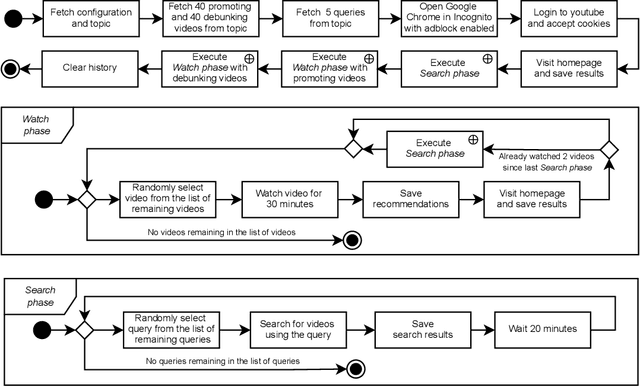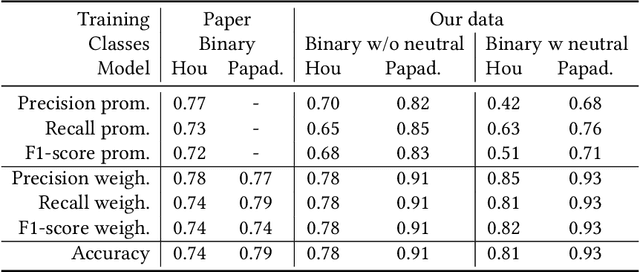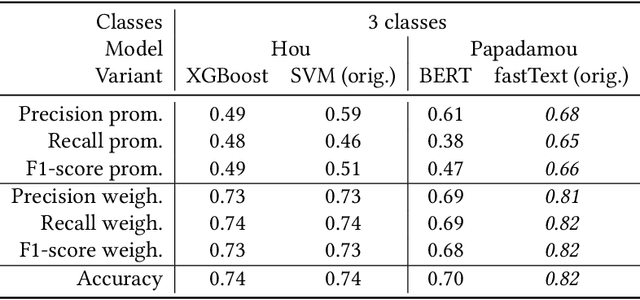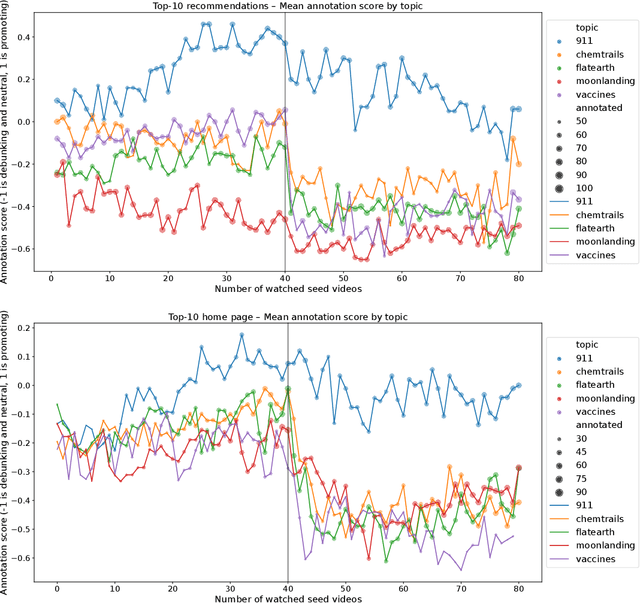Auditing YouTube's Recommendation Algorithm for Misinformation Filter Bubbles
Paper and Code
Oct 18, 2022



In this paper, we present results of an auditing study performed over YouTube aimed at investigating how fast a user can get into a misinformation filter bubble, but also what it takes to "burst the bubble", i.e., revert the bubble enclosure. We employ a sock puppet audit methodology, in which pre-programmed agents (acting as YouTube users) delve into misinformation filter bubbles by watching misinformation promoting content. Then they try to burst the bubbles and reach more balanced recommendations by watching misinformation debunking content. We record search results, home page results, and recommendations for the watched videos. Overall, we recorded 17,405 unique videos, out of which we manually annotated 2,914 for the presence of misinformation. The labeled data was used to train a machine learning model classifying videos into three classes (promoting, debunking, neutral) with the accuracy of 0.82. We use the trained model to classify the remaining videos that would not be feasible to annotate manually. Using both the manually and automatically annotated data, we observe the misinformation bubble dynamics for a range of audited topics. Our key finding is that even though filter bubbles do not appear in some situations, when they do, it is possible to burst them by watching misinformation debunking content (albeit it manifests differently from topic to topic). We also observe a sudden decrease of misinformation filter bubble effect when misinformation debunking videos are watched after misinformation promoting videos, suggesting a strong contextuality of recommendations. Finally, when comparing our results with a previous similar study, we do not observe significant improvements in the overall quantity of recommended misinformation content.
 Add to Chrome
Add to Chrome Add to Firefox
Add to Firefox Add to Edge
Add to Edge